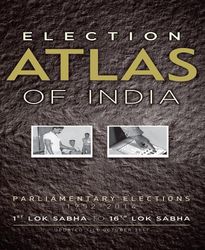Numbers tell how India’s polity changed since the first general elections in 1952. There are currently 21 Lok Sabha seats that the BJP has won consecutively since 1998. The Biju Janata Dal comes second with six seats, while the Congress has only five.
Political parties, nowadays, rely heavily on survey agencies and number crunchers to strategise for elections. And, Datanet’s Election Atlas of India gives number nuts comprehensive electoral data with the help of thematic maps and statistical diagrams of all 16 Lok Sabha elections until 2014.
The numbers provide for an interesting analysis, sans any commentary. The studiously mined material paints a picture of the tumultuous elections that shaped our democracy. The book has three sections. The first one has the statistics of all 16 elections, followed by a chapter that gives interesting trends through charts and diagrams. The final section details the profile and election results of each parliamentary consistency, even those that no longer exist.
Look at these figures: In 1952, the government spent about Rs 10 crore to conduct elections, while in 2014 it spent Rs 3,468 crore. This means the government spent 60 paisa per elector in 1952 and Rs 41 per elector in 2014.
Data mining can unravel mysteries. And, the atlas helps in understanding Indian elections better.
Elections Atlas of India: Parliamentary Elections 1952-2014
Published by Datanet India
Price Rs 9,500; pages 432


